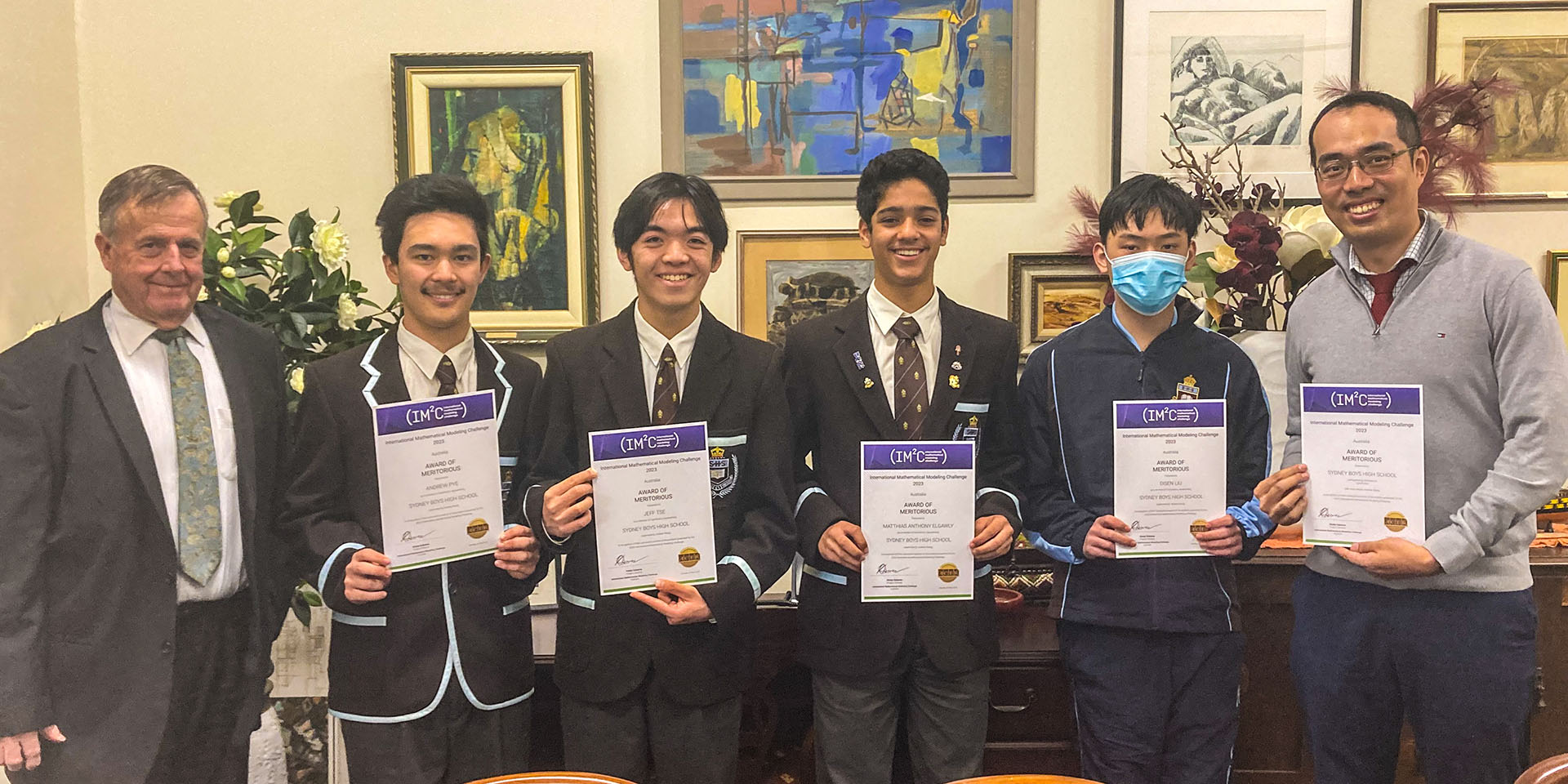
Australian schools impress in international maths challenge
ACER news 14 Jul 2023 4 minute readTwo Australian high school teams have been awarded honorable mentions in the final round of a prestigious global maths challenge.
In the Australian round of the International Mathematical Modeling Challenge (IM2C) in May, the teams from Sydney Boys High School (main picture) and Brisbane Boys’ College won the Meritorious and Outstanding awards, and moved to the final, international round.
Canada and Germany were declared the ‘Outstanding’ winners of the challenge, with the Australian teams recognised with 33 others from around the world, including from Spain, Syria, Turkey, China, the US and the UAE.
The Honorable Mention at the International round reflects the ingenuity and skills those teams showed in meeting this year’s challenge, on the theme of ‘Using Land: A valuable resource’.
Teams had 5 days to develop a mathematical model to determine the best use of a parcel of rural land located in Syracuse, New York, for business planners and community leaders.
They were given 8 suggested land use options, limited geographic statistics and maps, and then asked to adapt them and respond to variables. Challenges included the introduction of a large semi-conductor fabrication facility nearby and consideration of how the model might change if the land were in a different location or country.
‘Team Onyion’, from Brisbane Boys’ College (BBC) took an innovative approach to determining community preferences, modifying an Elo rating system (commonly associated with chess), developing a simulation and running it through a Python programming code 50 times to assess 350,000 ‘randomly generated’ personalities.
Looking at both a solar farm and regenerative farming, they also conducted an assessment of rural workplaces to determine the greatest potential for large scale employment.
The Brisbane Boys' College entry explains that its model ‘evaluates the effectiveness of the purpose of the land’ and gives a ‘balanced metric of community values and business profits’.
In determining Team Onyion the Australian winners, the judges described the use of a personality simulator and Elo ranking as ‘outstanding and novel’. They commended the team’s flow chart for explaining the modelling process and its sensitivity analysis and reflection.
.jpg) Team Onyion from Brisbane Boys’ College
Team Onyion from Brisbane Boys’ College
The ‘Calcaholics’ team from Sydney Boys’ High School divided its parcel into ‘tiles’ of land, determining each tile’s use based on environmental data. Uses included crops, solar energy and agrovoltaic farms (combining crop and solar production).
After devising models for each that incorporated economic, environmental and social considerations, the team settled on recommending a solar farm and agrotourism farm, and looked to give returns to the surrounding community.
‘To increase social standards,’ the Sydney Boys' High School entry says, ‘selling shares of the solar farm will transfer a portion of the profits of the farm from one big, rich company or person to several thousand people, allowing for a more developed society and happier residents.’
In selecting the Calcaholics as the second Australian entry for the international level, the judges noted the usefulness of the ‘tiles’ for looking at slope and solar cell efficiency, and praised the thorough dimensional analysis. They also commended the sensitivity analysis and context assigned to rural and metropolitan considerations around the fabrication plant.
ACER’s coordination of the IM2C in Australia is guided by a national advisory group of experts in mathematics, modelling and education.
Visit the IM2C website to find out more and register your interest in the next challenge.